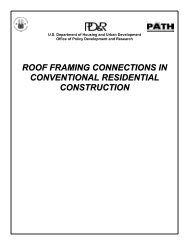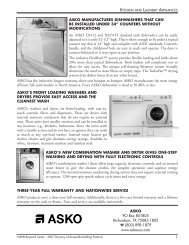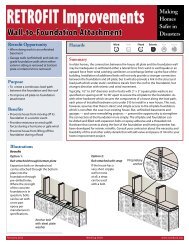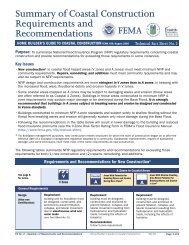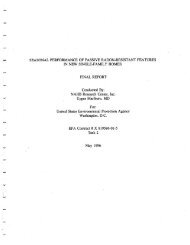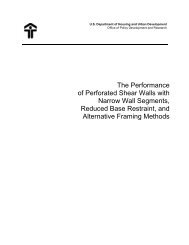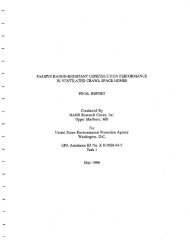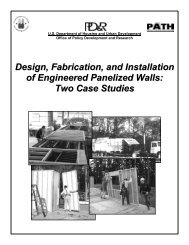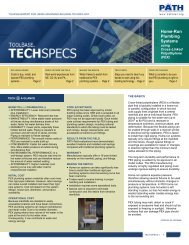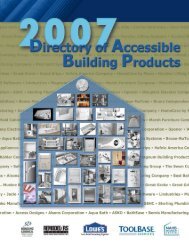Module 1 Student Guide - ToolBase Services
Module 1 Student Guide - ToolBase Services
Module 1 Student Guide - ToolBase Services
Create successful ePaper yourself
Turn your PDF publications into a flip-book with our unique Google optimized e-Paper software.
1 introduction & marketing 13<br />
SLIDE<br />
VALUE OF ENERGY EFFICIENCY TO YOUR CUSTOMERS<br />
HOMES COST LESS TO OPERATE<br />
Introduction<br />
Value of Energy<br />
Efficiency<br />
Certification<br />
Marketing<br />
Energy<br />
Efficiency<br />
Decision-<br />
Making Tools<br />
Financing<br />
Energy<br />
Efficiency<br />
Remodeling<br />
KEY CONCEPTS<br />
EXPLANATION<br />
Operational cost of efficient homes.<br />
Regardless of location or utility<br />
rates, energy improvements made<br />
during the remodeling process will<br />
result in lower utility bills for the<br />
customer. Every unit of energy<br />
saved helps buffer homeowners from future<br />
energy price increases. For example, during the<br />
2004-2005 heating season, the prices of fuel oil,<br />
natural gas, and electricity rose 20%, 7%, and<br />
4%, respectively, in January 2005 compared to<br />
January 2004. As with a more fuel-efficient<br />
vehicle, the magnitude of the cost increase due<br />
to fuel price increase will be lower than that of a<br />
less-efficient home. For example, consider two<br />
cars; one gets 50 mpg and the other 25 mpg.<br />
The less efficient car typically uses $1,000 of<br />
gasoline in a year; a 20% increase in fuel price<br />
translates into $200 added cost. The more<br />
efficient car typically uses $500 of gasoline per<br />
year; the increase in price causes an additional<br />
$100 fuel cost.<br />
This money, which would typically be paid to a<br />
utility, is now available for the homeowner to<br />
spend or save as they see fit. The money saved<br />
each month may even help the homeowner<br />
afford those other options for their home that<br />
they couldn’t otherwise purchase.<br />
In general, a nominal increase in cost for<br />
energy efficiency upgrades today will not only<br />
pay for itself over time but will continue to save<br />
customer money for years to come, ensuring a<br />
return on their financial investment.<br />
ACTION ITEMS<br />
RESOURCES<br />
Consider the long-term investment<br />
and reduced impact of price<br />
volatility due to energy efficiency.<br />
Home Energy Saver web tool: http:/<br />
/homeenergysaver.lbl.gov/<br />
http://weatherization.ornl.gov/<br />
NOTES<br />
_______________________________________<br />
_______________________________________<br />
_______________________________________<br />
_______________________________________<br />
_______________________________________<br />
_______________________________________<br />
_______________________________________<br />
______________________________________________________________________________<br />
______________________________________________________________________________<br />
_______________________________________<br />
13 <strong>Student</strong> <strong>Guide</strong> C E R T I F I E D E N E R G Y E F F I C I E N C Y R E M O D E L E R



